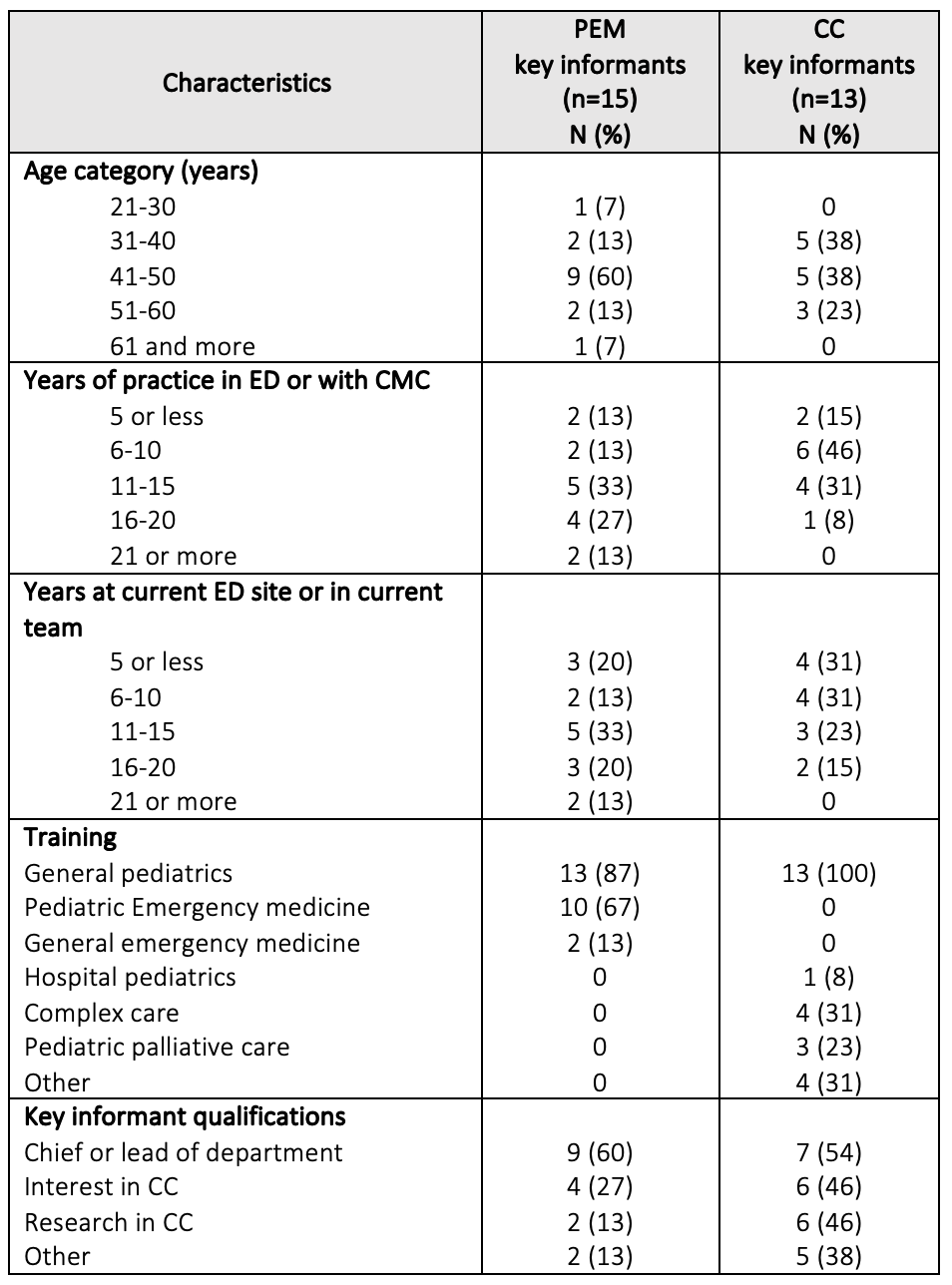Children with Chronic Conditions
Session: Children with Chronic Conditions 2
274 - How are pediatric tertiary care hospitals structured to respond to the needs of children with medical complexity during acute deteriorations? A landscape study in Canada
Friday, May 3, 2024
5:15 PM - 7:15 PM ET
Poster Number: 274
Publication Number: 274.262
Publication Number: 274.262

Nathalie Gaucher, MD PhD FRCPC (she/her/hers)
Associate Professor
CHU Sainte-Justine
Montreal, Quebec, Canada
Presenting Author(s)
Background: Children with medical complexity (CMC) are at risk of unplanned healthcare visits especially due to acute clinical deteriorations.
Objective: To identify the organizational and administrative resources available for the care of CMC in Canadian tertiary care pediatric hospitals and to assess how physicians believe these resources are adapted to the specific urgent needs of CMC.
Design/Methods: In this observational study, key informants representing complex care (CC) and pediatric emergency medicine (PEM) services from 15 pediatric tertiary care hospitals in Canada completed cross-sectional structured questionnaires. Participants were identified through research networks Pediatric Emergency Research Canada (PERC), Pediatric Inpatient Research Network (PIRN), and by snowball sampling. Utilizing the Lime Survey web application, two questionnaires (one for PEM, one for CC) were develop based on a literature review and following Burns methodology. Verbal questionnaires were administered via a secured teleconference application or completed digitally. Descriptive data were generated using Excel and SPSS v.29.
Results: From 09/2022 to 09/2023, 93% (28/30) informants completed questionnaires (Table 1). Across the 15 sites, 12 had a CC program/clinic. Information about CC programs was available for 10 sites from participating CC informants (Table 2): 4/10 offered outpatient services; 6/10 offered inpatient and outpatient services; 8/10 offered last minute appointments for CMC. CC programs had variable staffing: mostly physicians (median 3 FTE, range: 0.2-6) and nurse practitioners (0.75 FTE, range: 0-9) or registered nurses (0.9 FTE, 0-8). CC informants reported offering an ED consultation service at 8/10 sites, rarely during weekends (2/10) or nights (1/10), while 6/12 PEM informants reported access to any consultation service. Across 15 sites, PEM informants reported access to documents to help with continuity of care: emergency care plans (13/15), medical history (14/15), goals of care (13/15). On an 11-point scale, CC informants rated their hospital’s median ability to meet the outpatient needs of CMC as 6.5 (range: 0-10), and their ED’s median ability to meet the needs of CMC as 7 (range 5-10). PEM informants reported their ED's median ability to meet the needs of CMC: 8 (range 6-9). Informants made suggestions to improve the ED care of CMC (Table 3).
Conclusion(s): There exists wide variation in the structures caring for CMC and their availability in case of acute needs. National collaboration between CC and PEM teams may facilitate the design of programs to improve the acute outpatient care of CMC.



